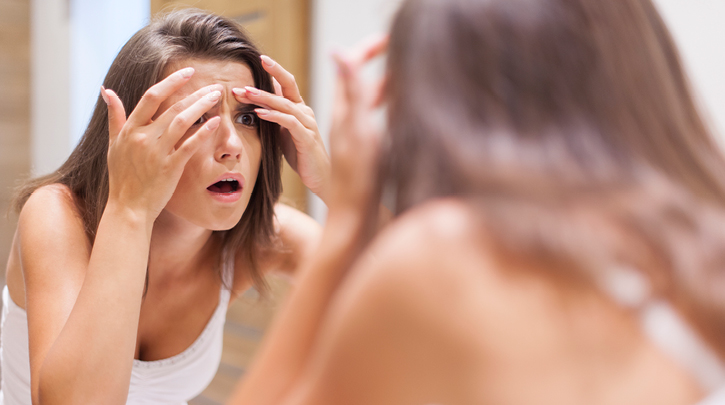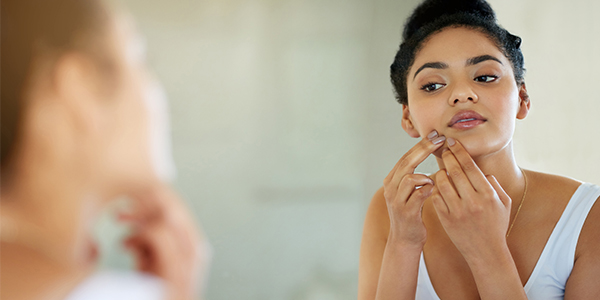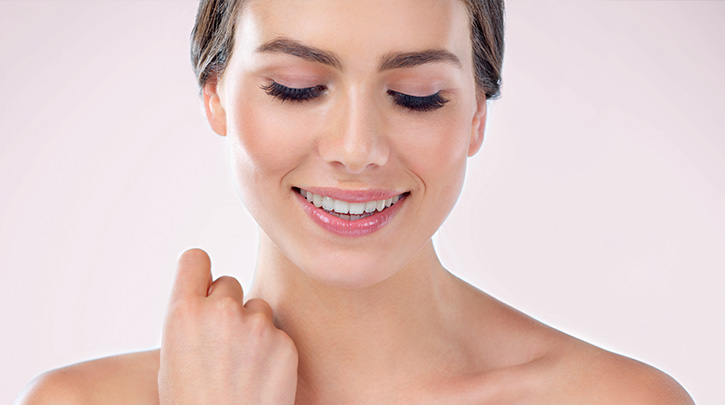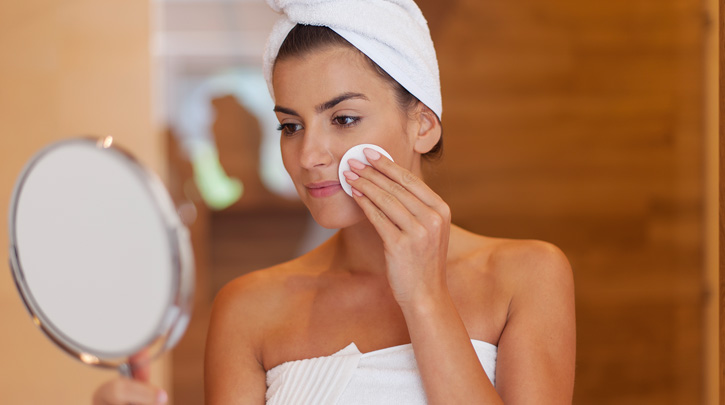
- Global
Get non-surgical solutions for today's top aesthetic concerns with Venus Treatments. Join thousands of satisfied patients worldwide!
- Loading...
- All Regions
Get non-surgical solutions for today's top aesthetic concerns with Venus Treatments. Join thousands of satisfied patients worldwide!

Acne is one of the most common skin conditions worldwide, affecting approximately 80% of youth and young adults in 2016 and between 40 and 50 million Americans at any one time, according to the American Academy of Dermatology (AAD). As well, while acne may typically be associated with adolescence, the skin condition can crop up at any age, appearing in newborn babies, young adults, and even as we surpass middle age. With causes of acne ranging from hormonal shifts and imbalances to friction, heat, genetics, skin hydration, and even air pollution, it becomes even more difficult to know how to treat your acne, particularly if you can’t identify the type of acne you’re experiencing. Use this guide to get you on the right track to defining and effectively treating your acne breakouts for smoother, clearer skin.
Before defining types of acne, it’s important to make some general notes. To start, acne vulgaris is the common technical name used to refer to acne; all forms of acne fall under this label.
“Comedo” or “comedones” are two other terms you should know. Comedones (which is the plural form of comedo) is a medical term for acne lesions or hair follicles that are clogged with excess oil and dead skin cells.
As a final note, it’s important to acknowledge that there may be several factors contributing to any one person’s acne condition. For this reason, while it’s essential to follow the best treatment protocol for your acne concerns, it’s necessary to note that you may require further assistance from a skin care professional to get to the root of your condition.
With those taken care of, let’s get started. The following are the main types of acne accompanied by the top ways to properly treat each type.
Definitions: Blackheads and whiteheads are considered mild forms of acne. Blackheads are open comedones that are filled with dead skin and excess oil (not just dirt). Blackheads turn dark in color as a result of the contents being exposed to air. In contrast, whiteheads are closed comedones that are also filled with excess oil and dead skin cells. Whiteheads appear to have a white spot in their center where the comedone is clogged.
Treatments: Generally speaking, blackheads and whiteheads may be treated similarly. Over-the-counter skin care treatments containing acne-targeted ingredients like benzoyl peroxide and salicylic acid, as well as some DIY at-home acne treatments, can be effective for removing dead skin cells and impurities while controlling the excess oil (sebum) that is clogging the pores. Gentle exfoliation with a warm washcloth may help unclog whiteheads in particular, while a healthy diet, proper hydration of the skin and body, and adequate sun protection can help to prevent excess dry skin. Finally, facial rejuvenation treatments may be an effective addition to a regular anti-acne skin care routine. Facial Rejuvenation treatments utilize a vacuum, rotating tip, and ultra-fine jet streams of purified water to simultaneously open up pores and remove impurities, such as dry or dead skin cells and excess sebum. While these treatments deep-clean pores, they also massage the skin to boost local micro-blood circulation, enhancing the spread of nutrients released from the bloodstream to the skin and supporting healthy skin cell renewal. The result is clearer, healthier-looking skin.
Definitions: Papules are clogged comedones that appear when whiteheads or blackheads irritate and damage surrounding skin. The affected skin becomes inflamed and appears red or pink in color; there is no white center. Affected areas may be tender to touch and attempting to pop papules usually leads to scarring.
Pustules are also inflamed comedones that appear as whiteheads surrounded by a red ring. These are what we commonly think of as pimples. They’re painful to touch and are filled with white or yellow pus, which is the result of immune cells trying to battle off bacteria in the affected comedone. Picking and popping can cause scarring, so it’s best to leave it to a skin care professional—though don’t wait too long and let the pimple pop on its own.
Treatments: For moderate to severe acne, a dermatologist or other skin care professional may prescribe the following products or treatments:
IPL-based acne treatments are an effective way to treat the root cause of most acne cases—Propionibacterium acnes, or P. acnes, bacteria. Utilizing IPL technology, these treatments combine the effects of blue and red light to simultaneously destroy acne-causing bacteria, while reducing inflammation and promoting faster healing.
Definitions: Like a larger version of papules, nodules appear large and inflamed and are firm to the touch. These are a result of clogged pores causing damage deep below the surface of the skin. Nodules are considered severe acne and may result in dark spots or scarring.
Cysts are the most severe type of acne. They appear as large, painful, red or white bumps deep in the skin that are filled with pus. Cysts risk severe skin complications and scarring, particularly if not properly treated by a dermatologist.
Treatments: Depending on their severity, dermatologists may recommend one of the following treatments for nodules and cysts:
Skin resurfacing or chemical peels may be utilized to encourage healing and the reduction in the appearance of scars and dark spots as a result of severe acne. Generally speaking, radio frequency (RF)-based skin resurfacing treatments may be preferred for a gentler yet effective approach with less downtime. Safe for all skin tones, these skin resurfacing treatments utilize an applicator tip with very small pins to create tiny micro-dermal wounds on the skin’s surface. Heat (via RF energy) is delivered through the pins deep below the skin’s surface, kickstarting the natural healing cycle to repair and replace damaged skin cells. At the completion of your skin resurfacing treatment plan, skin will appear smoother with a more even texture and a visible reduction in the appearance of acne scars.
Now that you’re better able to identify the type of acne you may be experiencing, you’re hopefully better able to target breakouts with the appropriate treatments for a clearer, smoother, more radiant complexion. While some types may be effectively treated at home, those who are looking for professional solutions should be aware of what to look for in a provider and ensure they book with a certified treatment professional.
To simplify the process of finding the right treatment provider for your facial rejuvenation, IPL acne treatments, or skin resurfacing treatments, use the convenient search field below to locate a certified treatment professional near you.
Find a certified Venus Treatments provider near you today who specializes in today’s top aesthetic medical solutions.



Search below to find a provider near you and to learn about our non-surgical aesthetic treatments with ARTAS®, NeoGraft®, Venus Bliss™, Venus Blilss MAX™, Venus Versa™, Venus Legacy™ Venus Versa™ Pro, Venus Velocity™, Venus Viva™ MD, and Venus Glow™.
For more information call: (888) 907-0115 // [email protected] // 235 Yorkland Blvd., Suite 900, Toronto, ON, M2J 4Y8 Canada
REGULATORY CLEARANCES [ More ]
Venus Bliss™ is cleared by the FDA and licensed by Health Canada for non-invasive lipolysis of the abdomen and flanks in individuals with a Body Mass Index (BMI) of 30 or less, with the diode laser applicators. The (MP)2 applicator is cleared by the FDA for temporary reduction in the appearance of cellulite, and licensed by Health Canada for temporary increase of skin tightening, temporary circumferential reduction, and temporary cellulite reduction. Venus Bliss™ has CE Mark as a non-invasive medical aesthetic device enabling a comprehensive approach leading to body contouring, addressing fat reduction, skin tightening, circumference reduction, and cellulite reduction.
Venus Versa™ is cleared by the FDA, licensed by Health Canada, and has CE Mark as a multi-application device intended to be used in aesthetic and cosmetic procedures. The SR515 and SR580 applicators are cleared by the FDA, licensed by Health Canada, and have CE Mark for the treatment of benign pigmented epidermal and cutaneous lesions and treatment of benign cutaneous vascular lesions. The HR650/HR650XL and HR690/HR690XL applicators are cleared by the FDA, licensed by Health Canada, and have CE Mark for the removal of unwanted hair and to effect stable long-term or permanent hair reduction for Fitzpatrick skin types I-IV. The AC Dual applicator is cleared by the FDA, licensed by Health Canada, and has CE Mark for the treatment of acne vulgaris. The DiamondPolar™ and OctiPolar™ applicators on the Venus Versa™ system are cleared by the FDA for non-invasive treatment of moderate to severe facial wrinkles and rhytides on females with Fitzpatrick skin types I-IV. The DiamondPolar™ applicator is licensed by Health Canada and has CE Mark for non-invasive treatment of moderate to severe facial wrinkles and rhytides on females with Fitzpatrick skin types I-IV. The OctiPolar™ applicator on the Venus Versa™ system is licensed by Health Canada and has CE Mark for temporary body contouring via skin tightening, circumferential reduction, and cellulite reduction. The NanoFractional RF™ (Viva) applicator is cleared by the FDA, licensed by Health Canada, and has CE Mark for dermatological procedures requiring ablation and resurfacing of the skin.
NeoGraft® is cleared by the FDA, licensed by Health Canada and has CE Mark with indication for use in suction-assisted follicular extraction and re-implantation. It is an auto-graft system and can be used on both male and female patients.
ARTAS iX™ is cleared by the FDA, licensed by Health Canada and has CE Mark with indication for use for harvesting hair follicles from the scalp in men diagnosed with androgenic alopecia (male pattern hair loss) who have black or brown straight hair. ARTAS iX™ is intended to assist physicians in identifying and extracting hair follicular units from the scalp during hair transplantation; creating recipient sites; and implanting harvested hair follicles.
Venus Legacy™ is cleared by the FDA for the non-invasive treatment of moderate to severe facial wrinkles and rhytides in females with Fitzpatrick skin types I-IV with the OctiPolar™ and DiamondPolar™ applicators, and temporary reduction in the appearance of cellulite with the 4D Body (LB2) and 4D Face (LF2) applicators. It is licensed by Health Canada and has CE Mark for the temporary increase of skin tightening, temporary circumferential reduction, temporary cellulite reduction, and temporary wrinkle reduction.
Venus Velocity™ is cleared by the FDA, licensed by Health Canada and has CE Mark for hair removal, permanent hair reduction (defined as the long-term stable reduction in the number of hairs re-growing when measured at 6, 9 and 12 months after the completion of a treatment regimen), and the treatment of pseudofolliculitis barbae for all Fitzpatrick skin types.
Venus Fiore™ received regulatory approval in Israel for aesthetic and functional treatment of the vagina, labia and mons pubis. Venus Fiore™ is available for sale in India, Hong Kong, and other selected Asian countries.
Venus Viva™ is cleared by the FDA, licensed by Health Canada, and has CE Mark for dermatological procedures requiring ablation and resurfacing of the skin. The DiamondPolar™ applicator is cleared by the FDA, licensed by Health Canada and has CE Mark for the treatment of moderate to severe wrinkles and rhytides in Fitzpatrick skin types I-IV.
Venus Freeze Plus™ is cleared by the FDA for the non-invasive treatment of moderate to severe facial wrinkles and rhytides in females with Fitzpatrick skin types I-IV. It is licensed by Health Canada for temporary skin tightening, and temporary reduction in the appearance of cellulite on the abdomen and flanks, using the DiamondPolar™ and OctiPolar™ applicators. The DiamondPolar™ applicator on Venus Freeze Plus™ has CE Mark for the non-invasive treatment of moderate to severe facial wrinkles and rhytides, and the increase of skin tightening, temporary circumferential reduction, and cellulite reduction with the OctiPolar™ applicator.
Venus Heal™ is licensed by Health Canada and can be used for the treatment of both acute and chronic disorders of the musculoskeletal system, such as muscle spasms, back pain, and soft tissue injuries, and results in effects such as pain relief, myorelaxation, increase of local blood circulation, and edema reduction. In the U.S., Venus Heal™ is cleared by the FDA for the relief of minor muscle aches and pain, relief of muscle spasm, and temporary improvement of local blood circulation. These indications enable the treatment of certain soft tissue injuries and conditions.
Venus Glow™ is cleared by the FDA as a Class I motorized dermabrasion device. It provides a dermal rejuvenation treatment that works to open up and deep-clean pores. Venus Concept is the exclusive distributor for Venus Glow™.
Venus Epileve™ is licensed by Health Canada and has CE Mark for hair removal, permanent hair reduction (defined as the long-term stable reduction in the number of hairs re-growing when measured at 6, 9 and 12 months after the completion of a treatment regimen), and the treatment of pseudofolliculitis barbae for all Fitzpatrick skin types. Venus Epileve™ is also CE-Marked for hirsutism.
Venus Freeze™ is cleared by the FDA for the non-invasive treatment of moderate to severe facial wrinkles and rhytides in females with Fitzpatrick skin types I-IV. It is licensed by Health Canada for temporary skin tightening, and temporary reduction in the appearance of cellulite on the abdomen and flanks, using the DiamondPolar™ and OctiPolar™ applicators. The DiamondPolar™ applicator on Venus Freeze™ has CE Mark for the non-invasive treatment of moderate to severe facial wrinkles and rhytides, and the increase of skin tightening, temporary circumferential reduction, and cellulite reduction with the OctiPolar™ applicator.
Venus Swan™ is cleared by the FDA for the non-invasive treatment of moderate to severe facial wrinkles and rhytides, and licensed by Health Canada for the non-invasive treatment of cellulite reduction, skin tightening, and temporary reduction in the appearance of stretch marks.
Copyright © 2025 Venus Concept. All rights reserved.
You are entering our website. For other countries/regions and language options, please click the SELECT A DIFFERENT REGION button below.
SELECT A DIFFERENT REGIONAre you looking to get a treatment? Please visit our patient website to learn more.
Click HereUnsure which aesthetic treatment is right for you? Take this quick and easy quiz to discover treatments that suit your needs.
Get Started